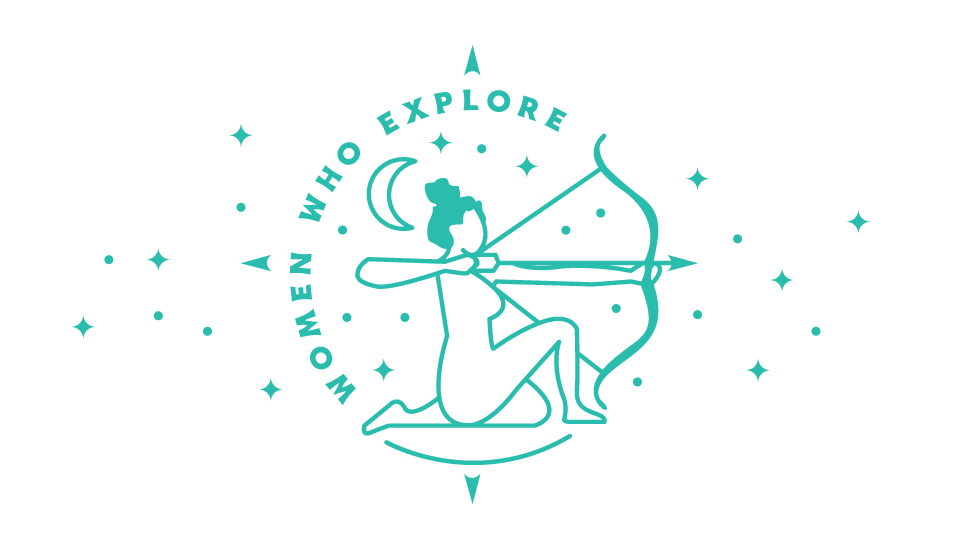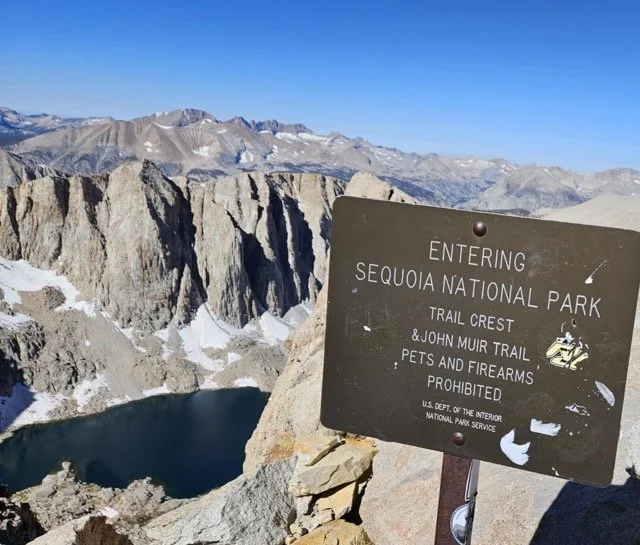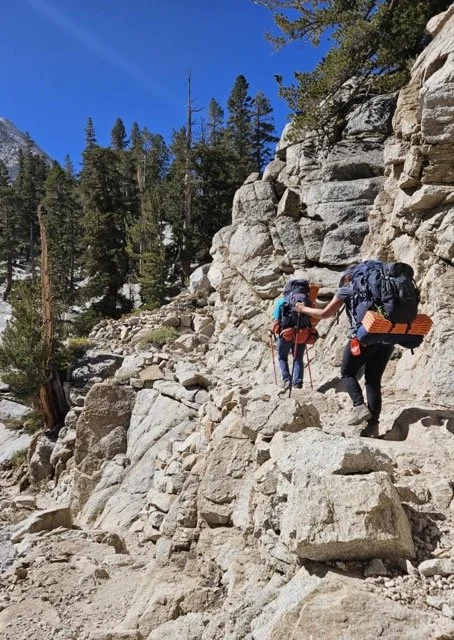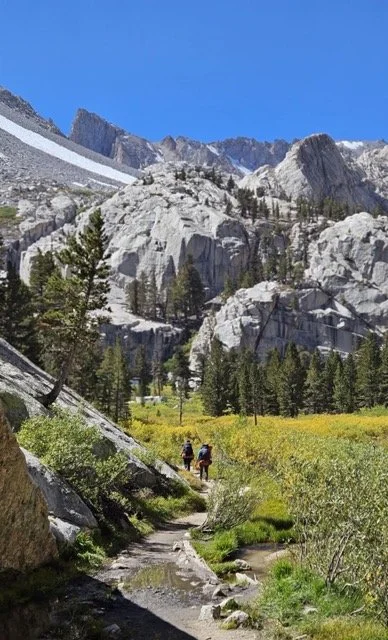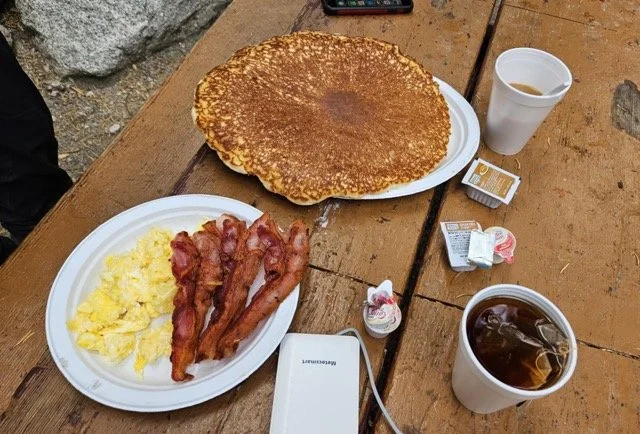Mt Whitney: High Altitude, a Disoriented Climber, and a Tent from Craigslist
I had wanted to climb Mount Whitney for a while and was pumped to get some last minute overnight permits for myself and two friends. Mount Whitney is the highest peak in the continental US at 14,505 feet, and attracts thousands of permit seekers each year. The permits are popular and difficult to come by. Some who are unable to get the overnight permits choose to do all 22 miles and 6,700 feet of elevation gain in a single day. We were excited to make this a three day backpack to acclimate to the elevation.
The permits were for late September, so we kept an eye on the weather which can change easily to snow in the high Sierras that time of year. We spent one night of car camping at the Whitney Portal Campground, at 8,400’ elevation, then hiked up to Outpost Camp at 10,400’ for the second night. We planned to get an early start for the summit. The forecast looked great, clear fall weather the first two days, with possible rain on our hike out.
Our first day we hiked to Outpost Camp, enjoying the beautiful Sierra scenery, set up camp, relaxed, and went to bed early. On summit day, we started out pre-dawn with headlamps on and no wind. We watched the sun rise, saw only a few people, and made it to Trail Camp at 12,200 feet in good time. Next was the notorious “99 Switchbacks”. As we gained elevation above 12,000 feet, we slowed down quite a bit adjusting to the thinner air. At the top of the 99 switchbacks, we joined the John Muir Trail and entered Sequoia National Park. It was truly stunning seeing all the peaks and granite in every direction. We were light headed and queasy at 14K, so we took it easy, sipped water, snacked, and took lots of photo breaks. The summit was just perfect! Sunny and no wind, and we enjoyed the views, celebrated our summit and took pictures for others and ourselves. There were a few “Mt Whitney 14,505” carved metal signs to hold and pose with. We ended up spending about an hour at the summit before heading back down towards our camp.
About 800 feet down from the summit, we noticed someone that seemed to be struggling. A male hiker, by himself in heavy black clothing was shuffling down the trail carrying his backpack over one shoulder. He would take a few steps, then slump against some rocks. He was carrying an empty plastic water bottle, and had a large camera strapped to his chest.
“Is he okay?” we wondered. We asked him if he needed any water and he showed us his empty bottle and mumbled that he had some. His words were slurred. English was not his first language, so it was hard to tell if it was a language barrier, if he was having difficulty talking, or if he was confused. Luckily my two climbing companions are both nurses and had a strong suspicion that he had an altitude illness.
Acute Mountain Sickness(AMS) is a result of insufficient oxygen in the blood due to decreased atmospheric pressure at high altitude. The most common symptoms are nausea, headache, and severe fatigue. Some people are more prone to experiencing AMS, and certain health conditions such as anemia, pulmonary disease, diabetes and heart conditions can increase these side effects. However, there are many ways to help prevent or minimize risk, including hydration, minimizing alcohol use prior to climbing, and acclimatizing slowly. The risk of ignoring the symptoms of altitude illness is the progression to the more severe conditions: HACE, High Altitude Cerebral Edema, or HAPE, High Altitude Pulmonary Edema. In this case, our climber was showing signs of HACE: AMS with ataxia, confusion, and a loss of muscle coordination (which can affect balance, speech and movement). He was displaying the classic “umbles” : stumbling, fumbling, mumbling, and grumbling. He also complained of a headache and nausea.
He tried to get rid of us. He gestured us to go away then sat down on the next rock looking exhausted. The trail was starting to get pretty quiet at this point in the late afternoon and we knew sunset would be upon us soon. We didn’t want to leave him as he was in no shape to continue down without help. We started the steep and rocky hike down with him to find his tent. He stumbled and slipped and we took turns holding onto him. As we worked our way down the 99 switchbacks, we continued asking him questions. We learned that he had fallen and hurt his shoulder which was why he wasn’t wearing his backpack properly. He had a graze over his right eye and a bit of a limp.
HACE is a serious condition which when untreated can progress quickly to coma and death within 24 hours. We knew we needed to act fast and we had a short window of time in which he was still able to hike. We helped him with his backpack by guiding his injured shoulder through the strap first. Our main focus was descending as quickly as we possibly could.
During one of many rest stops, we were finally able to get him to drink some water and eat some electrolyte gummies. His english improved and his speech was becoming clearer as we got lower. We managed to piece together some of his situation. He’d been up since 3am to summit from Trail Camp, had not slept much, not eaten since the day before, and didn’t have much water- two small plastic water bottles which were crumbled and empty.
Because of our very slow pace, several people passed us going down. We learned that some of the thru-hikers from the John Muir Trail were advised by Rangers to exit the trail as there was a big snowstorm coming. We felt an increased sense of urgency, but were not able to move much faster.
We finally got to high Trail Camp after dozens of rest stops and started looking for his tent. He said it was a red WalMart tent that he’d purchased on Craigslist. He said it was missing parts and he wasn’t able to stake it down the night before. He was convinced he had camped on a ridgeline below Trail Camp and started wandering off in that direction. We tried to stop him as we knew that would not have been somewhere he would of pitched a tent. He became argumentative, insisting on traveling off trail to the next ridge. He had no map or navigational devices. It was getting dusk. We were not going to abandon him, but how could we prevent him from going off trail in his weak and confused state? We talked to a few other campers and they remembered seeing a red tent blowing around during the day not far ahead. We headed further down to try to find it.
Dealing with HACE can definitely be challenging. In addition to confusion, people can become irritated and combative (the grumbles). In this case severe dehydration was also an issue and likely increased his irritability. Our patience was being tested. Our climber refused to drink and tried to convince us to just leave him alone several times. We took turns distracting him with conversation and allowed some distance between us as we descended.
Fortunately we encountered two UCLA grad students who spoke his language and were able to find out more details of his situation as they accompanied us for part of the journey. They were dismayed at his lack of awareness and preparation, and told us that he had very little understanding of just how challenging this hike was. We were able to find his tent. We gathered up all his backpacking things, and divided his belongings among the five of us to carry down.
It was dark and much colder by the time we got to our tents at Outpost Camp at 10,400’. The grad students left us to head to their car at Whitney Portal, but helped us to convince our climber to stay at our camp and rest. Selfishly, it was a bit of a mental struggle to not be frustrated with this unprepared guy. This wasn’t the celebratory evening we’d imagined—relaxing with the sunset, enjoying a warm meal, toasting our summit. Instead, we spent our final bit of energy setting up his tent, getting him to eat hot food, and settled for the night. He went to sleep immediately. We were exhausted with the whole ordeal, so we crawled into our tents soon after.
Throughout the night, we heard other climbers walking through our camp, heading upward - into the storm. About 1am in the morning we heard our names called. It was our climber, saying that he was feeling better, and was heading down to his car 4 miles away! It was dark and cold and we tried to convince him to stay until daylight, but he had already packed and was determined to leave. There was no more fight in us and we chose not to argue. We gave him our cell phone numbers and asked him to text us to let us know that he safely made it to his car.
At 6.30am we awoke to a deep orange sunrise and a muffled quietness. We climbed out of our tents to find several inches of snow on the ground, and dark clouds that looked like more would be coming down. Near our bear canister, we found someone curled up sleeping next to a rock wearing jeans and a sweatshirt - with no tent or bivy! We asked the young man how he was doing and he said he was on his way up to the summit and was just resting for a few hours. He was unaware of the storm forecast, and not bothered by the snow around him. We told him about the big storm coming in and that rangers were advising hikers to leave the high country. We said clearly that he needed to turn around as he did not have the right gear for the weather, and could be in danger. He was unconcerned. We gave him a large black garbage bag to help keep him drier, alerted some of the other campers nearby about his situation, and gave up.
We wanted to beat the storm and get back to our cars and the gigantic breakfast we were dreaming about at the Whitney Portal Café, so we packed up in record time with no coffee/tea or breakfast! There was no sign of our injured climber on the way down or at the trailhead. Once we got to the trailhead, we enjoyed their famous pancakes the size of our heads and mounds of eggs and hashbrowns.
By mid-morning, the storm was picking up and we watched it roll in from the Visitor Center in Lone Pine as hail pelted the windows. Our injured climber texted the next day, letting us know he’d made it home, calling us his “Trail Angels”.
Now that he had our cell phone numbers, we looked forward to a message from him just about every Saturday for months thanking us for helping him. He even sent us a picture of himself on Mt Whitney with crampons on.
We have spent many hours reflecting on this trip. Planning and preparing for a climb is essential. What we witnessed that day on Whitney could have been prevented.
We feel we did the best we could given the circumstances. It took all three of us to recognize the climbers’ condition. Realizing he wasn’t able to make sound decisions, we stuck with him despite his refusals. If he were to become combative and create an unsafe environment for us we could have called for mountain rescue. Thankfully we didn’t have to and relied on each other’s skill sets to help him down safely. We used distraction techniques and allowed him as much independence that felt safe while we steered him down to lower elevation. We feel that if we hadn’t intervened and assisted him, his condition would have deteriorated rapidly, and the outcome could have been tragic.
Written by Melanie, Ambassador for Women Who Explore: Portland, OR
She enjoys hiking, mountain climbing, backpacking, snow shoeing, spike hiking, all types of skiing, biking, paddle boarding and planning adventure travel trips – but says she especially enjoys leading activities for people who love to be in the great outdoors as much as she does. She finds it so rewarding to help people become more and more comfortable and empowered to accomplish great things as they take on new hobbies and interests in nature.
